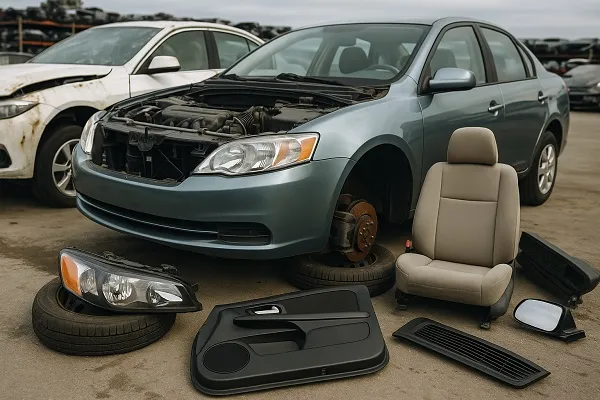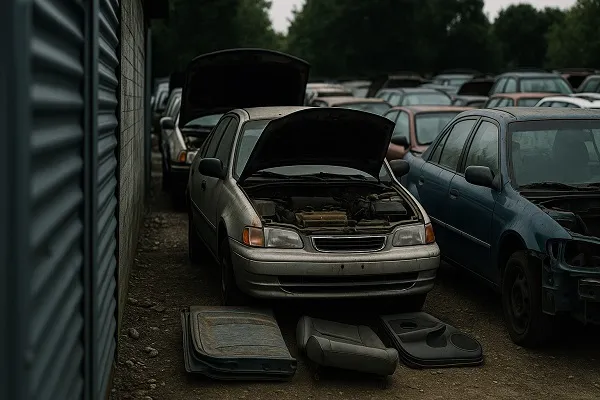What Junkyards Won’t Tell You is something most vehicle owners only learn after costly mistakes or missed opportunities. Junkyards, salvage yards, or auto recyclers can be extremely valuable for parts, scrap vehicle removal, and affordable replacements, but they rarely share insider details that could save you money and help you get better results. Understanding the hidden strategies, pricing secrets, and overlooked risks can make a significant difference when selling, buying, or negotiating inside a salvage yard.
Hidden Profit Margins and Pricing Tactics
Most junkyards operate using a profit-focused model that depends on how much they can resell or recycle from a vehicle rather than what it may appear to be worth.
They won’t openly disclose:
- Many parts are marked up significantly even though they were acquired at little or no cost
- Some yards set pricing based on demand, not part quality
- They may prioritize parts for online resale platforms and price them higher for walk-ins
- They rarely negotiate unless you push for it
Even if the car seems worthless, its metal, catalytic converter, battery, electronics, and airbag systems can bring more money than you might expect.
They Make More From Scraps Than From Selling You Parts
Junkyards profit heavily from metal recycling, catalytic converter materials, and copper wiring. Selling a complete part is just one income stream, and not the most profitable one in many cases.
Materials That Bring High Profit
- Catalytic converters due to precious metals inside
- Aluminum and copper parts and wiring
- Engines and transmissions sold to rebuilders
- Batteries recycled for core value credits
- Airbags resold to repair shops or online markets
You may think your vehicle is worthless if it no longer drives, but junkyards know exactly how to maximize every component.
Your Vehicle Is Worth More When Sold in Parts, Not as a Whole

A junkyard rarely tells you that disassembling the vehicle yourself and selling parts individually could bring far more money.
Why?
Because buying the entire car gives them control over everything, and they profit multiple times from a single purchase.
Parts You Can Sell Separately for Higher Earnings
- Wheels and tires
- Radios, touchscreens, infotainment tech
- Mirrors and steering components
- Seats and interior electronics
- Sensors, modules, and security systems
Selling parts individually requires time and effort, but the return can be significantly higher than a single junkyard quote.
They May Withhold Part History or Quality Info
Most salvage yards do not track maintenance records, mileage accuracy, or how a part was used before removal. If the part has hidden damage or was exposed to flood conditions, they aren’t required to reveal it unless your state mandates it.
Risk Factors They Won’t Mention
- Parts may come from wrecks where structural damage affected components
- Electronics could have hidden corrosion from flood exposure
- Some parts may fit but are not the correct OEM match
- “Tested” parts may not actually be function-tested
Always check stamped codes, compare part numbers, and visually inspect before purchasing.
Return Policies Are Often Limited or Nonexistent
A no-return or exchange-only policy protects their profit. Some junkyards offer warranties, but they are usually short and limited.
Key things to know:
- Ask about warranties in writing
- Verify what qualifies for an exchange
- Take photos of the part at purchase
- Test immediately after installation
The longer you wait, the more leverage you lose.
They Don’t Always Advertise the Best Inventory

Not every part makes it to the showroom or online inventory system. High-value parts are often held for preferred buyers, resellers, mechanics, or online listings.
Why This Happens
- Limited shelf space
- Higher profit online vs local buyers
- Priority to professional rebuilders
Ask if they have additional inventory “not yet listed” or stored in back-lot areas.
Negotiation Works, but Only if You Know How
Junkyards rarely invite negotiation, but experienced buyers know that pricing is often flexible, especially for older or slower-moving parts.
Tips that increase negotiation success:
- Bring cash
- Know the real market value
- Ask for bundle pricing when buying multiple parts
- Visit near closing time or during slow business hours
Confidence and knowledge are powerful negotiating tools.
Pull-Your-Own Parts Advantages and Hidden Rules
Self-service salvage yards offer cheaper prices, but there are unspoken challenges and safety considerations.
What They Won’t Advertise
- Tools are your responsibility
- They usually don’t assist with removal
- Liability waivers remove responsibility for injuries
- High-demand parts may already be stripped
Wear gloves, bring proper tools, and inspect donor vehicles before spending time removing parts.
Some Vehicles Are Sold Before They Ever Hit the Lot

Junkyards maintain relationships with body shops, mechanics, rebuilders, and online resellers. Many high-value vehicles never become available to the public.
Strategies to access better deals:
- Build rapport with staff
- Join buyer lists if available
- Ask about new arrivals and hold requests
Being proactive can give you early access to top inventory.
Titled Vehicles Can Sometimes Be Purchased for Rebuilding
Not all salvaged vehicles are permanently unusable. Some junkyards receive cars with repairable damage and titles that can be restored depending on state laws.
Look for:
- Light collision damage
- Cosmetic vs structural issues
- Local salvage inspection requirements
Buying and rebuilding may save thousands on a discount vehicle.
A deeper understanding of what junkyards won’t tell you can save money, reduce risk, and open opportunities many car owners overlook. Whether you’re selling a car, sourcing used auto parts, or negotiating pricing, knowledge is your best advantage. Approach every junkyard transaction with confidence, verify part details, ask questions, and don’t hesitate to negotiate. Smart buyers walk away with better deals, higher value, and long-term savings.
Content reviewed and published by Sell My Car Colorado Editorial Team.
